Typhus Fever
While typhus fever is less common in developed regions today, it remains a concern in certain areas, especially those with poor living conditions and limited access to healthcare. Diagnosing typhus can be challenging due to its nonspecific symptoms, which can overlap with other febrile illnesses. Serological tests and polymerase chain reaction (PCR) assays are employed for confirmation, and prompt diagnosis is crucial for initiating appropriate treatment. Treatment of typhus involves the use of antibiotics, with doxycycline being a common choice. Early initiation of treatment can significantly reduce the severity and duration of the illness. However, prevention remains a cornerstone in controlling typhus outbreaks. This includes improving living conditions to minimize the proliferation of body lice, implementing vector control measures, and raising awareness about personal hygiene practices. Typhus fever, though less prevalent in the modern era, serves as a reminder of the importance of addressing social determinants of health, maintaining vigilance in regions prone to outbreaks, and investing in public health infrastructure. Ongoing research into the ecology of Rickettsia prowazekii, the dynamics of vector-borne transmission, and the development of improved diagnostics and vaccines contribute to our ability to control and mitigate the impact of typhus fever in vulnerable populations.

Francis J Castellino
University of Notre Dame, United States
Ranjan Ramasamy
ID-FISH Technology, United States
Saurabh Chattopadhyay
University of Kentucky College of Medicine, United States
Rico Leonardo Lizbinski
Northern Light Health, United States
Sasha Leibholz
New York Presbyterian Columbia/Cornell, United States
Lauren Gruffi
New York Presbyterian Columbia/Cornell, United States



Title : Pathogen-derived noncanonical epitopes: Are they valuable targets for novel vaccinations and shall we be concerned about autoimmune responses?
Michele Mishto, Francis Crick Institute, United Kingdom
Title : Bioterrorism through the ages: Historical perspective, emerging threats, and medical countermeasures
Claudia Ferreira, Sorbonne University, France
Title : Changing population immunity to COVID-19 in the context of infection, vaccination, and emerging SARS-CoV-2 variants
Ranjan Ramasamy, ID-FISH Technology, United States
Title : Extensively drug-resistant bacterial infections: Confronting a global crisis with urgent solutions in prevention, surveillance, and treatment
Yazdan Mirzanejad, University of British Columbia, Canada
Title : Measles vaccination coverage indicators in 2023 and advance towards measles elimination and eradication by 2030
Pedro Plans Rubio, College of Physicians of Barcelona, Spain
Title : Severe influenza and other related respiratory infection cases during Omicron era in Japan
Masafumi Seki, Saitama Medical University International Medical Center, Japan